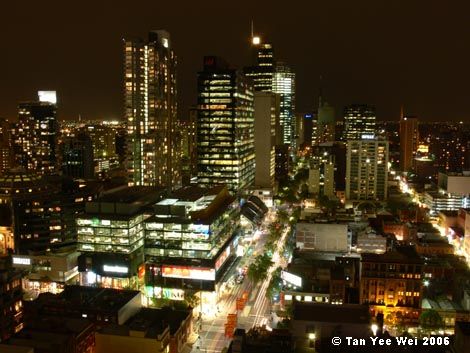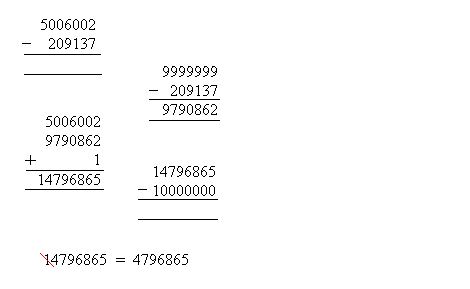Screenplay, part 2
English translation provided at the end of the Chinese text. The screenplay format was used as it would allow a decent level of detail to be conveyed without having to resort to fanciful sentence crafting. Anyway, I am unable to produce decent Chinese sentences. Give me time. Lots of time.
Note to Mr. Hon SY: I doubt you’d want to watch this performance on stage- it’s probably too dull. You want sex, drugs and violence, not small talk about today’s weather.
第一幕
人物:陈一维,林小姐,老板
场景:某餐厅之bar
语文:普通话
(餐馆以关了,只剩三人打扫与准备给明天中午开门。林小姐在bar里的洗碗盆洗杯和茶壶、一维从厨房的大冰橱拿各种饮品填满bar的冰橱、老板在整理餐厅的桌。)
林小姐:老板,你须不须要请新的工人?
老板:为什么呢?
林小姐:我有一个朋友找着part time工作。
老板:(走到bar前根林小姐谈)哦,这样。他有做过的吗?
林小姐:没有。
老板:没有experience怎么做?
林小姐:可以学的吗。怎么样都一定比那个沙发好啦。你知道吗,刚才她多么过分。这里有一大堆杯,她都没有来帮洗,还在那边(指着餐厅里的走廊)走上走下不知干吗。
(老板没出声。)
一维:(蹲在bar里的冰箱旁排饮品的罐和瓶子)可以啦,没有经验还可学的。
林小姐:对呀。你看一维也做得很好吗。
老板:(对一维)阿陈,你以前在那里工作?
一维:(停止填冰橱,转向老板)什么工作?
老板:做hospitality的工作啊。
一维:我没有做过的。这是第一次。
老板:(吃一经。大马音调强)哈?你以前不是更我讲你有做过?
一维:(笨笨的微笑)哦。。。没有办法啦,要找一个开始。
老板:(大马音调强)哎呀,你骗我啊?要跟你罚款五块钱的啦。。。
(林小姐小声的笑。)
(老板走开打扫餐厅、一维继续填饮品、林小姐洗杯。)
(第一幕终)
Act 1
Characters: Tan Yee Wei, Miss Lim, Boss
Scene: the bar of a restaurant
Language: Chinese/Mandarin
(The restaurant has closed for the day, and only three people remain to tidy up and prepare for the next business day’s lunch opening. At the bar’s washing sink, Miss Lim washes used glasses and tea pots. Yee Wei is bringing various bottles and cans of drinks from the large fridge in the kitchen to restock the bar. Boss is tidying the dining area.)
Miss Lim: Boss, do you need new workers?
Boss: Why do you ask?
Miss Lim: I’ve got a friend who is looking for a part time job.
Boss: (walks to the bar to talk to Miss Lim) Ah, I see. Any working experience?
Miss Lim: No.
Boss: How will she work without experience?
Miss Lim: She can learn on the job. It will be better than that Sofa anyway. You know, she was really overdoing it earlier this evening. There was a huge pile of dirty glasses here, and she did not come help do them, and was walking up and down there (points to the aisle in the dining area) doing nothing.
(Boss keeps quiet.)
Yee Wei: (squatting next to the bar’s fridge arranging bottles and cans of drinks.) It’s doable, she can learn even if she hasn’t got experience.
Miss Lim: Yeah. Look, Yee Wei is also doing quite well.
Boss: (to Yee Wei) Tan, where did you work previously?
Yee Wei: (pauses stocking the bar, faces Boss) What work?
Boss: Your previous job in hospitality.
Yee Wei: I haven’t worked before. This is my first time.
Boss: (Surprised. Speaks with thick Malaysia Chinese accent) What? Didn’t you tell me when you came in you’ve got experience?
Yee Wei: (smiles sheepishly) Ah yes…I had no choice. Had to start somewhere…
Boss: (speaks with thick Malaysian Chinese accent) Aiyah, you lied to me? I must give you a fine of $5…
(Miss Lim laughs quietly)
(Boss returns to tidying the dining area, Yee Wei continues stocking the fridge, Miss Lim washes the remaining glasses.)
(End Act 1)
Appended 2200 1/5/06:
As the cliché goes, an idle mind is the devil’s workshop. As much as I dislike clichés, Mr Hon is one perfect example of this. The following plot is written by him, slightly edited for consistency with the original settings.
This section was not written by me, and is not based on true events.
(一维和林小姐在bar内工作。)
林小姐:一维,你说老板会请我朋友吗?他可是蛮需要找份工的。。
一维:你可以叫你朋友也骗骗老板嘛,说自己有experience。 你看,老板也不会很生气的。
林小姐:你都骗过一次啦,哪能用一样借口俩次的?(埋怨的眼神)
一维:嗯。。。那是因为你诚实嘛。。你是个。。乖女孩。。
林小姐:(甜蜜的笑容)是吗?可没人说过我乖呢!我看你样子都挺诚实的,真没想到你会骗人。你会不会也在骗我呢?
一维:当然不会!我跟你讲话一定很诚实的。
林小姐:哈哈。。咦?你干嘛脸都红啦?
一维:我,我。。。
(老板走到bar前)
老板:喂,你们做东西做得那慢啊?
(Yee Wei and Miss Lim work on their tasks in the bar.)
Miss Lim: Yee Wei, do you think Boss will hire my friend? She needs a job quite badly…
Yee Wei: You could ask her to lie to the Boss and say she has worked before. Look, he didn’t get too annoyed earlier anyway.
Miss Lim: (complainingly) You’ve already lied once, how can the same line be used again?
Yee Wei: Err, that’s because you are honest. You are a… good girl.
Miss Lim: (smiles sweetly) Really? No one told me that before! You look like a honest and morally integral person, who would’ve thought you’d tell lies. Are you bluffing me now?
Yee Wei: Of course not! I will always tell you the truth.
Miss Lim: Haha… Eh? Why are you blushing?
Yee Wei: I…
(Boss walks towards the bar)
Yee Wei: Hoi, why are you two taking so long to finish up?
Reminder: this section was not written by me, and is not based on true events.
Personal
Labels: chinese posts, milestones and such, personal




